Avian Influenza
Research by the U.S. Geological Survey and Partners
What is Avian Influenza?
Avian influenza (AI) is a viral infection of wild birds that cannot been seen with the naked eye. It is caused by a group of viruses known as type A influenzas. During the current outbreak, we have also seen AI infect wild mammals (terrestrial, freshwater, and marine).

Avian influenza viruses occur naturally in wild birds such as ducks, geese, swans, and gulls. These low pathogenic viruses do not generally cause illness; however, highly pathogenic viruses cause illness and death in backyard birds and commercial poultry. During this outbreak, we have also seen other food animals infected, such as dairy cows, goats, and alpacas.
Recent evidence has shown that highly pathogenic avian influenza is an emerging threat to wild birds and other wildlife.

Outbreaks may cause devastating agricultural economic losses and some viral strains have the potential to infect people directly. Furthermore, the combination of avian influenza viruses with mammalian viruses can result in strains that can transmit from person to person, possibly leading to viruses with pandemic potential.
"Conceptual diagram depicting the generalized ecology of avian-origin influenza A (AI) viruses. Arrows depict common directionality of cross-species transmission events for AI viruses, including those with a highly pathogenic (HP) phenotype among wildlife, agricultural, and human sectors." From Ramey et al 2022
The Centers for Disease Control and Prevention (CDC) assesses human risk for avian influenza.
Federal Response to Avian Influenza
The Interagency Steering Committee for Surveillance for Highly Pathogenic Avian Influenza (HPAI) in wild birds facilitates a coordinated and cooperative approach among many federal and state agencies for the surveillance of wild birds to detect avian influenza viruses in the U.S. The Steering Committee currently includes representatives from the U.S. Department of Agriculture (USDA), U.S. Fish and Wildlife Service (USFWS), U.S. Geological Survey (USGS), the National Flyway Council (NFC), and the Association of Fish and Wildlife Agencies (AFWA).
USGS Role in Federal Response
The USGS is the science bureau of the U.S. Department of the Interior (DOI) and has been conducting research on avian influenza since 2006.
The DOI works with the USDA to actively coordinate with State and Federal wildlife, agricultural, and human health agencies to understand avian influenza distribution and dynamics to aid natural resource managers, agricultural officials, and the food animal industry.
In collaboration with these partners, the USGS developed a national science strategy for Highly Pathogenic Avian Influenza (HPAI) for 2016-2020. This science plan augments on-going research to forecast disease spread by wild birds, detect novel strains, characterize factors that control persistence of HPAI in the environment, and develop risk assessments for livestock, natural resources, and human health.
USGS AI Science Strategy
Implementation of novel objectives and proposed research actions with international, Federal, State, Tribal, and academic partnerships served as the basis for developing robust decision-making frameworks to aid resource managers and policymakers faced with the biological threat of HPAI. The strategy encompasses five long-term research science goals.
The USGS AI science team is currently working on a new science plan based on emergent needs.
Science Goal 1
Augment National HPAI Surveillance Plan
- An interagency effort to revise a national surveillance plan for HPAI in wild migratory birds in the United States, fill data gaps and avoid data redundancy
Objective 1: Develop tools and strategies for early HPAI detection in wildlife and the environment
Proposed Action 1: Develop new detection strategies for HPAI in environmental samples
Proposed Action 2: Detect potential HPAI introductions into the United States
Objective 2: Conduct HPAI surveillance in wild birds and peridomestic wildlife (wildlife living in and around human occupied areas)
Proposed Action 1: Implement the National Interagency Surveillance Plan for HPAI in waterfowl
Proposed Action 2: Collaborate with USDA to conduct HPAI surveillance of potential hosts near poultry facilities
Proposed Action 3: Conduct meta-analysis of HPAI surveillance strategies
Science Goal 2
Determine mechanisms of HPAI disease spread in wildlife and the environment
- Understand the spread and persistence of HPAI in wildlife, water, and sediments; work with resource managers to assess prevalence of AI viruses and population outcomes for wildlife, poultry, and public health
Objective 1: Determine mechanisms of HPAI spread and persistence in wildlife.
Proposed Action 1: Conduct experimental HPAI studies to understand the role of sea ducks in the movement, transmission, and evolution of these viruses.
Proposed Action 2: Examine the role of filter-feeding organisms in HPAI persistence, transmission, or inactivation.
Objective 2: Determine mechanisms of HPAI spread and persistence in the environment
Proposed Action 1: Determine hydrologic characteristics that facilitate persistence of HPAI in fresh and brackish waters
Proposed Action 2: Examine persistence of AI viruses in sediment
Proposed Action 3: Characterize AI transport in groundwater
Proposed Action 4: Investigate climate variability and change as a driver of AI persistence and spread
Objective 3: Determine mechanisms of HPAI spread and persistence in peridomestic wildlife found near poultry operations
Proposed Action 1: Interagency workshop on the wildlifedomestic animal HPAI interface
Proposed Action 2: Field research to examine the role of wild birds in HPAI movement
Proposed Action 3: Experimental studies to understand the role of wild birds in HPAI movement, transmission, and evolution
Proposed Action 4: Conduct research to examine the role of non-avian species in HPAI movement and transmission
Objective 4: Determine implications of High and Low Pathogenic Avian Influenza (HPAI and LPAI) exposure for wildlife
Proposed Action 1: Investigate population level impacts of HPAI exposure on DOI trust species
Proposed Action 2: Determine the genetic factors associated with HPAI resistance and susceptibility
Proposed Action 3: Compare wildlife HPAI immune responses for targeted HPAI surveillance and management
Science Goal 3
Characterize HPAI viruses circulating in wildlife
- Genomic and bioinformatics characterization of AI viruses circulating in wildlife and the environment and a spatiotemporal assessment of risk to poultry production, wildlife, and public health
Objective 1: Characterize AI viruses circulating in wild birds
Proposed Action 1: Characterize HPAI viruses in wild birds across North America
Proposed Action 2: Characterize LPAI viruses in wild birds across North America
Proposed Action 3: Characterize LPAI and HPAI strains in peridomestic wild birds near poultry operations
Objective 2: Characterize AI viruses circulating in wild mammals
Proposed Action 1: Characterize AI viruses circulating in peridomestic mammals near poultry operations
Proposed Action 2: Characterize AI viruses circulating in feral swine
Objective 3: Characterize HPAI viruses circulating outside North America and on the continental fringes with potential of introduction
Proposed Action 1: Characterize AI viruses circulating in wildlife outside of North America
Proposed Action 2: Characterize AI viruses on continental fringes of North America
Science Goal 4
Understand implications of avian ecology on HPAI spread
- Clarify how intercontinental migration and avian community interaction influence HPAI spread
Objective 1: Map spatial and temporal distributions of wild and domestic avian populations for risk model development
Proposed Action 1: Develop wild and peridomestic bird distribution models as inputs for disease risk assessments
Proposed Action 2: Develop high resolution models of poultry densities as inputs for disease risk assessments
Proposed Action 3: Examine the influence of climate change on bird migration and its implications on AI dynamics
Objective 2: Address AI-relevant information gaps in avian migratory connectivity data
Proposed Action 1: Develop quantitative flyway maps of AI reservoir species
Proposed Action 2: Determine population connectivity of avian AI reservoir species through genetic analyses
Proposed Action 3: Characterize landscape connectivity between avian AI reservoirs and wild birds susceptible to HPAI disease
Objective 3: Investigate HPAI transmission in avian communities and the impact of HPAI on avian populations
Proposed Action 1: Determine HPAI transmission pathways within ecological communities
Proposed Action 2: Assess impact of HPAI on North American avian populations
Science Goal 5
Develop HPAI forecasting and decision-making tools
- Conduct decision analyses and develop risk and decision models from the first four goals (and prior USGS research) to integrate into risk assessment and decision models to improve AI detection and improve outbreak prevention strategies in poultry and wildlife management outcomes
Objective 1: Provide decision support to management agencies
Proposed Action 1: Work with management agencies to develop a quality HPAI decision making framework
Proposed Action 2: Synthesize HPAI decision analyses from different management agencies to identify common information gaps and critical uncertainties
Proposed Action 3: Refine HPAI research priorities based on management partner needs
Objective 2: Develop HPAI risk assessment and predictive models
Proposed Action 1: Develop dynamic occupancy models to estimate probabilities of AI occurrence
Proposed Action 2: Conduct a meta-analysis of existing AI mechanistic models
Proposed Action 3: Develop geospatial models of HPAI transmission risk at the wild-to domestic bird interface
Proposed Action 4: Develop Landsat-based HPAI risk maps
Proposed Action 5: Develop hydrologic HPAI risk maps
Proposed Action 6: Develop models of HPAI transmission risk for avian communities
Objective 3: Develop online HPAI data visualization tools
Proposed Action 1: Improve existing collaborative databases to store historical and future HPAI data
Proposed Action 2: Develop an HPAI data visualization tool
USGS AI Research Centers
The USGS conducts research on AI at multiple science centers and Cooperative Research Units (CRUs) across the nation and has amassed substantial internationally recognized expertise investigating this disease.
USGS Scientists are
- Defining the role of migratory birds in viral spread
- Characterizing genetics of viruses in wild birds
- Determining environmental conditions affecting survival of the viruses in wetlands
- Examining the potential role of non-waterfowl hosts
- Investigating the potential ecological consequences of infection in migratory birds

Alaska Science Center (ASC)
Anchorage- Juneau- Fairbanks, AK
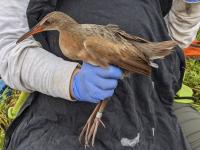
Western Ecological Research Center (WERC)
Sacramento, CA
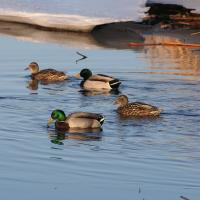
Montana Cooperative Research Unit (MCRU)
Missoula, MT
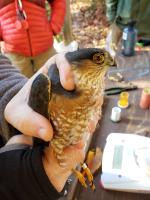
Upper Midwest Environmental Sciences Center (UMESC)
La Crosse, WI

National Wildlife Health Center (NWHC)
Madison, WI | Honolulu, HI
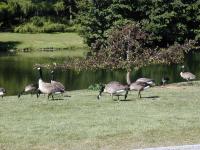
Upper Midwest Water Science Center (UMid WSC)
Several locations across WI, MI, MN
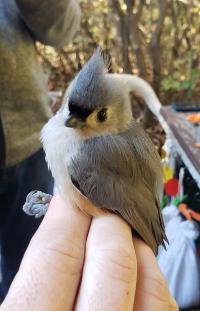
Eastern Ecological Science Center (EESC)
Kearneysville, WV | Beltsville, MD
Outbreak Response
Predicting: AI Transmission Risk Model Web Application
Reporting Bird Mortalities: WHISPers
WHISPers stands for Wildlife Health Information Sharing Partnership - event reporting system. It is a partner-driven, web-based repository for sharing basic information about historic and ongoing wildlife mortality (death) and/or morbidity (illness) events. WHISPers provides a place and a reporting structure for natural resource managers to enter event information and for anyone, including the public, to learn about verified (laboratory diagnosed) wildlife disease events.
Monitoring bird movements:
While using citizen science and scientific survey data to create distribution models for wild waterfowl provides valuable information about spatio-temporal trends, tracking live birds via satellite telemetry provides information on how wild waterfowl interact with landscape features on a fine scale. This data can then be paired with information on domestic poultry distribution to help understand transmission risk in an integrated manner.